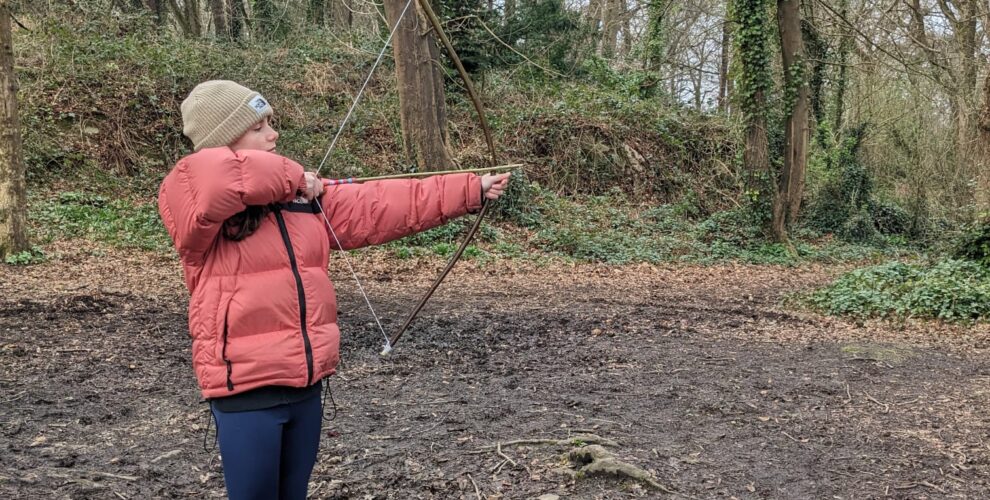(written by Yuuki Blakeney & Jenny Dungan)
It was a lovely sunny day for the second week of Forest School with 6th class. The theme of this week’s session was “taking appropriate risks”. One of the six principles of Forest school is to offer learners the opportunity to take supported risks appropriate to the environment and to themselves.
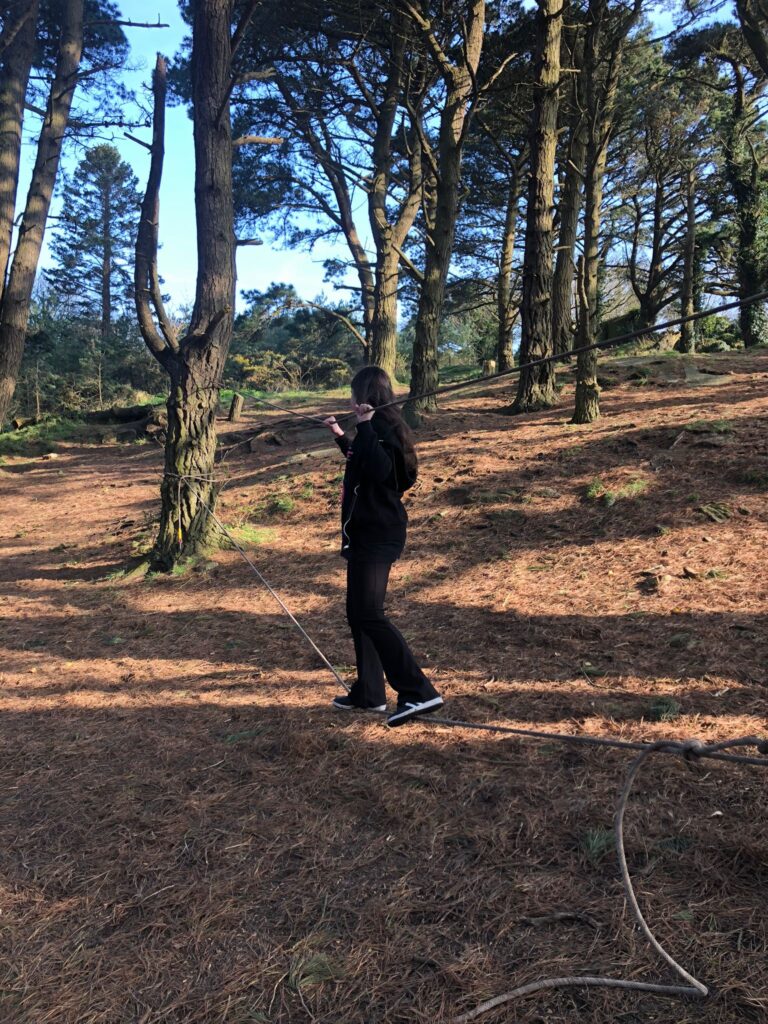
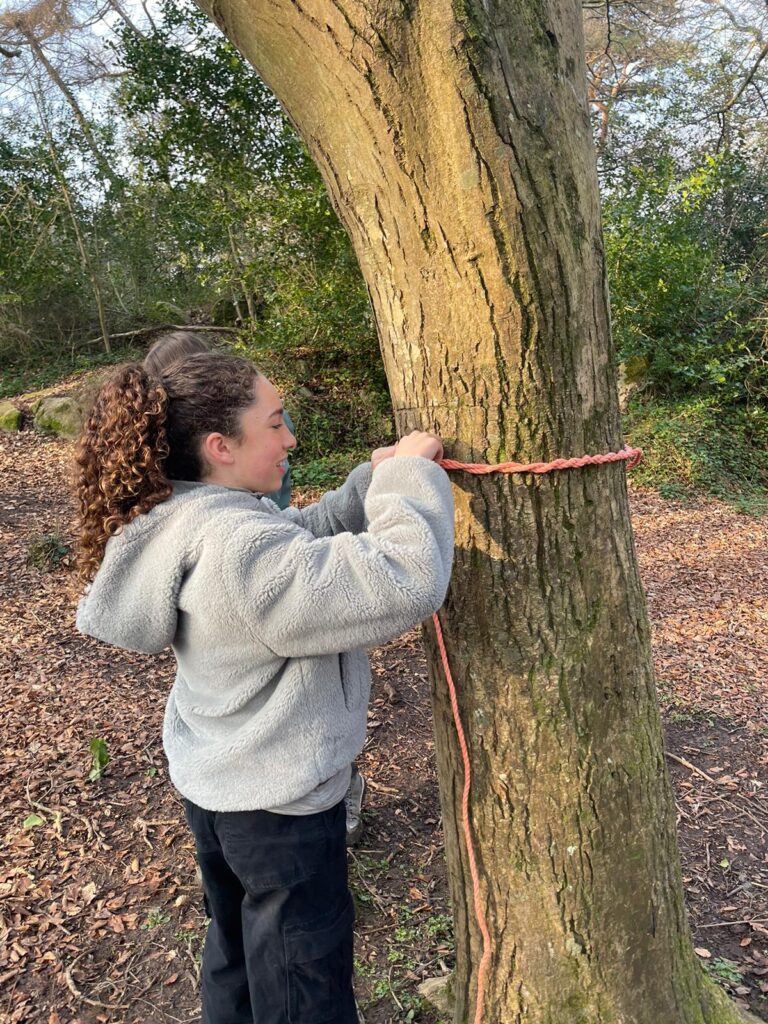
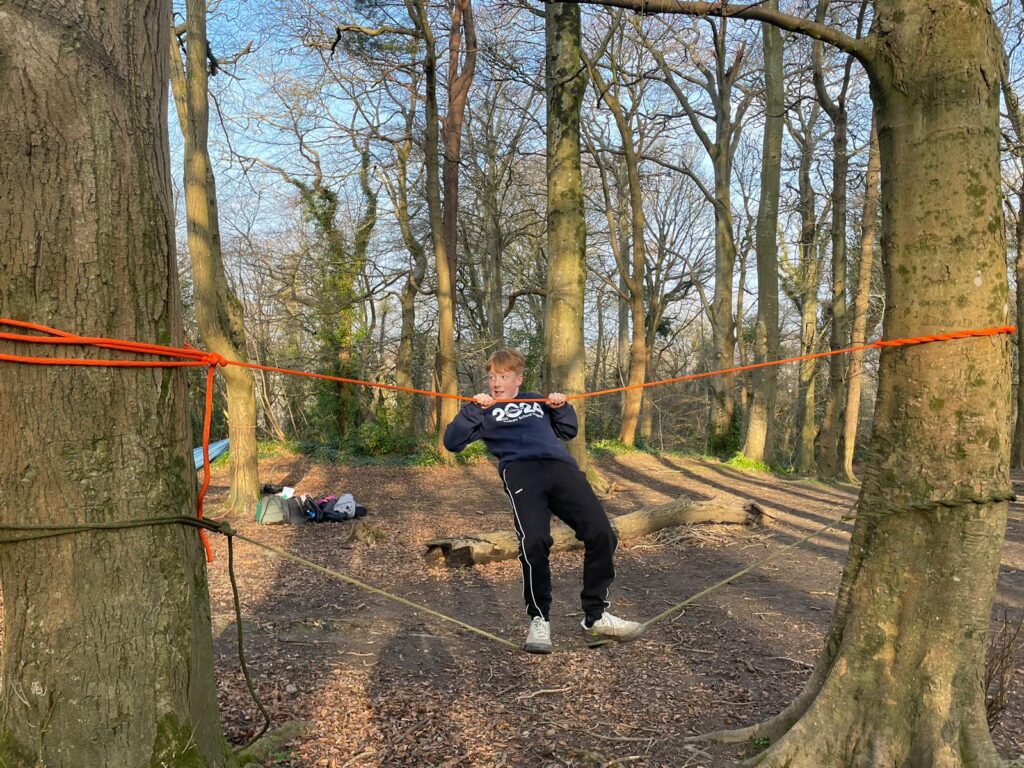
Learning how to manage risks gives them independence and confidence, and is important for their growth. We want children to be able to risk assess a variety of situations for themselves. As they progress into teenage and adult years, where the risks can be higher, we want the children to have the skills to know what feels safe or unsafe and how to navigate that.
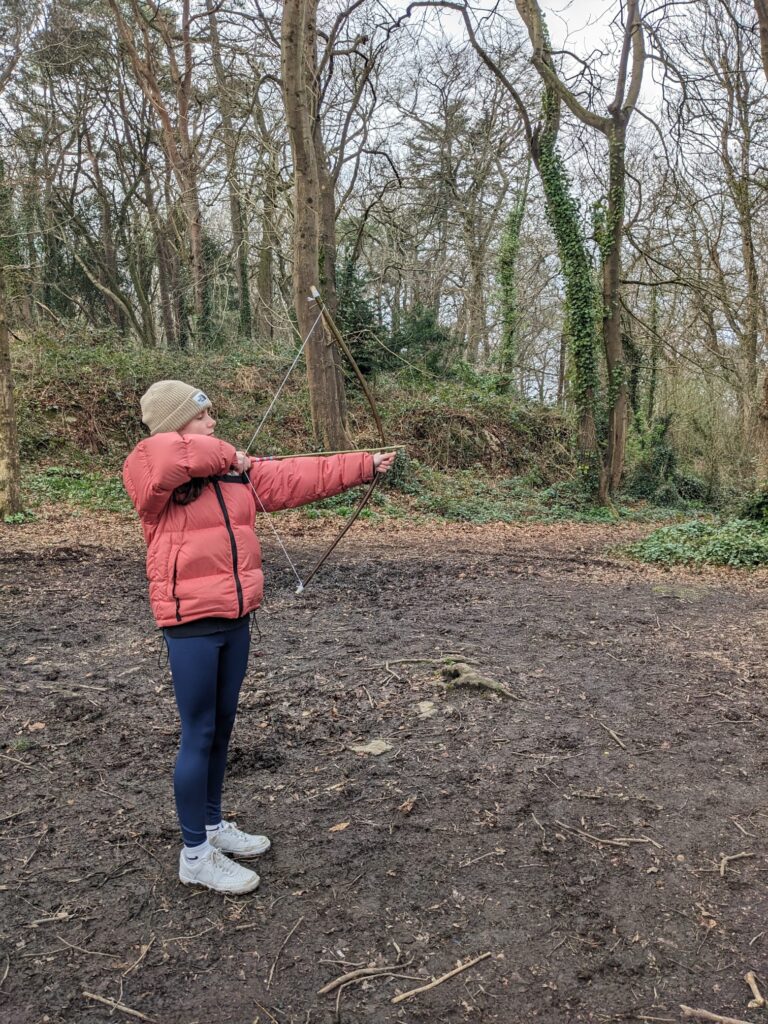
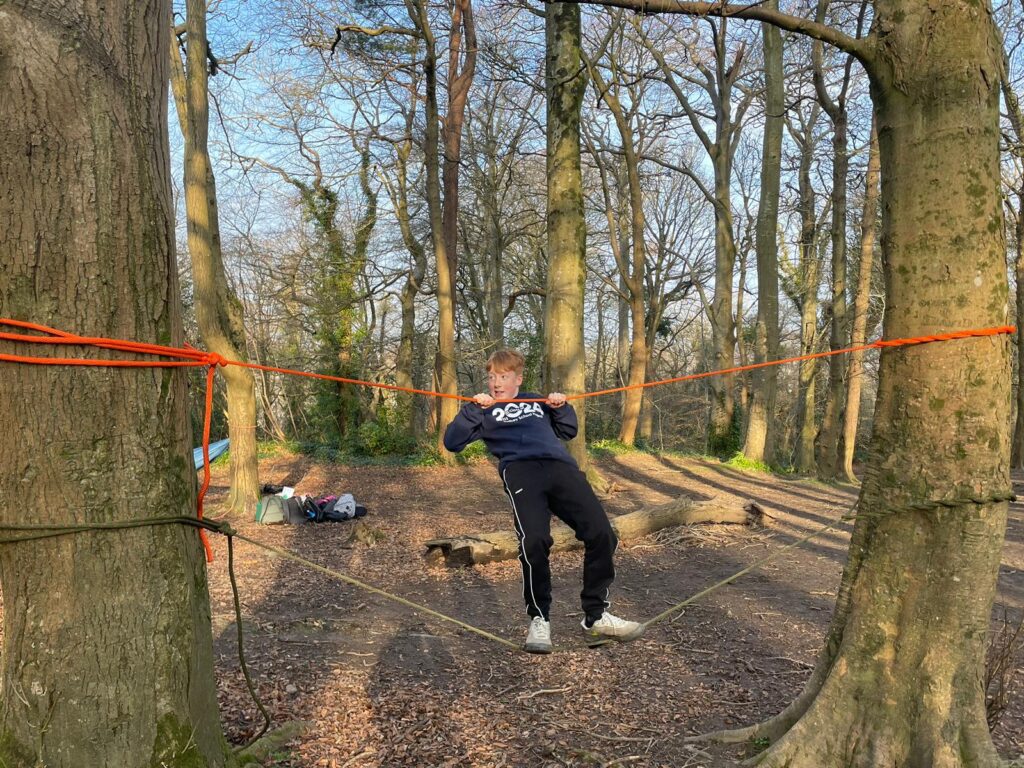
Rather than “Be careful!” which can create a feeling that the world is a scary place and they are not equipped to deal with it, we try to get the children involved in assessing risk and doing what feels right for them.
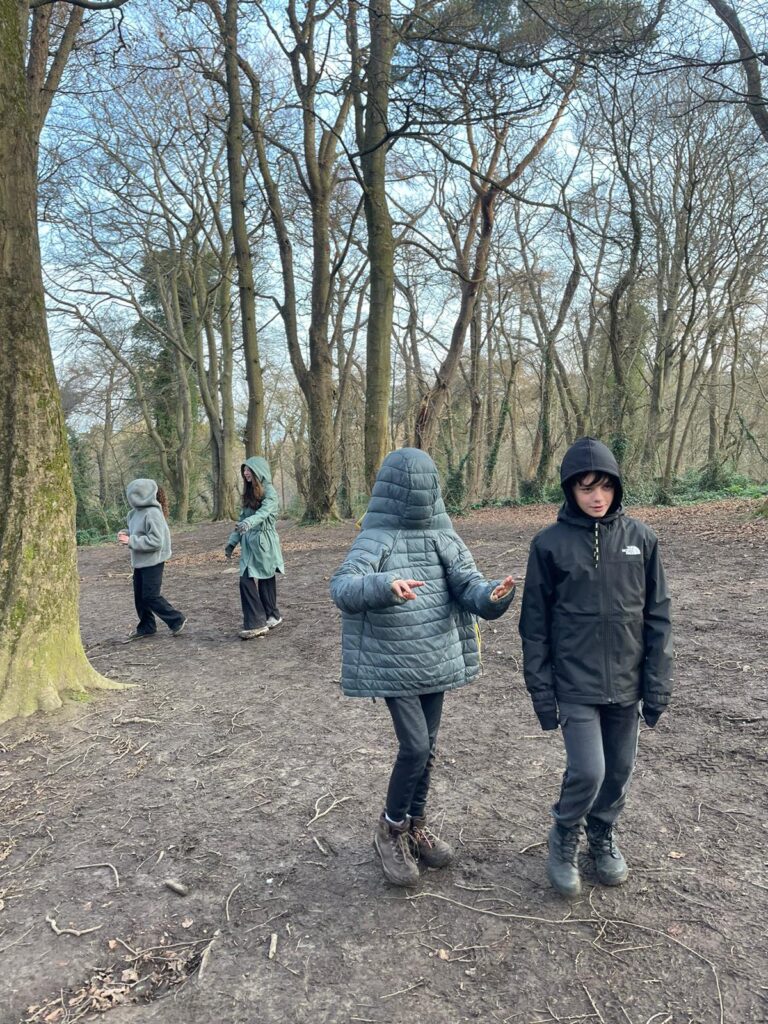
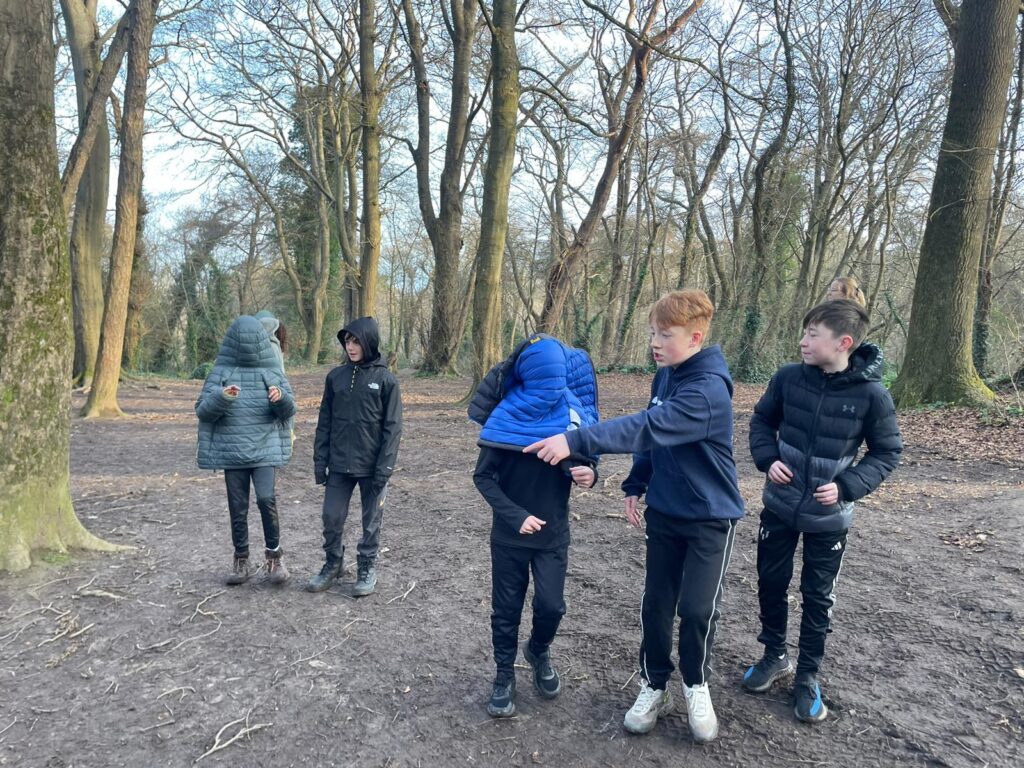
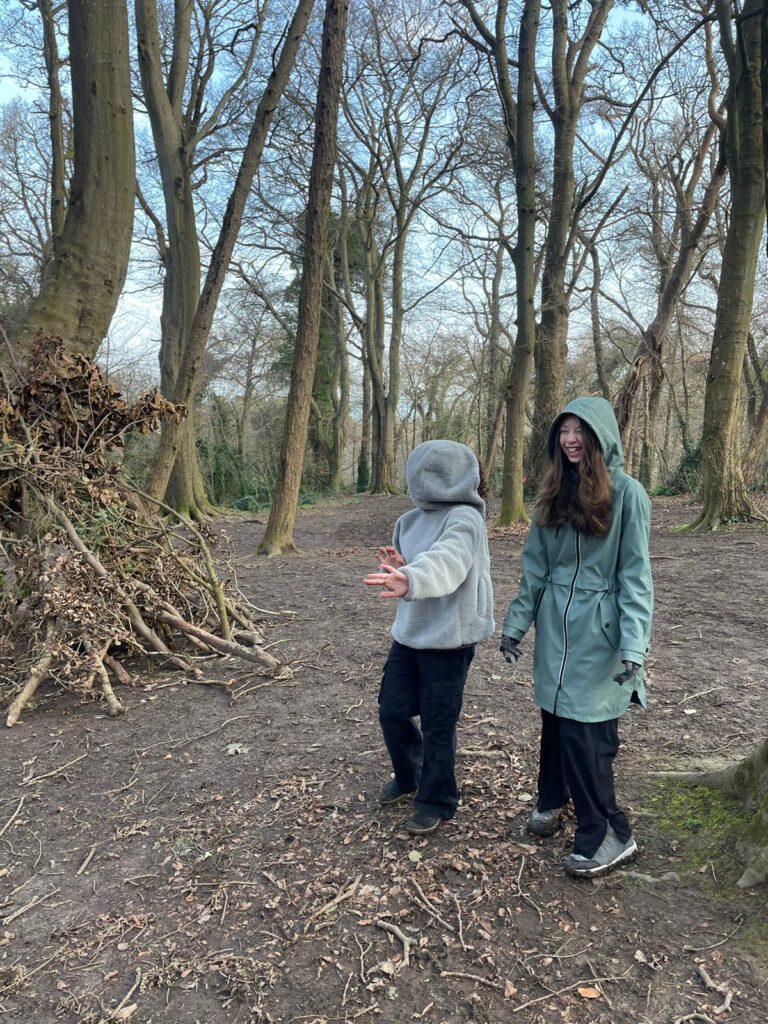
From Junior Infants on we help the child foster awareness by saying:
- Notice how… these rocks are slippery, that branch is strong
- Do you see… the nettles, the big drop?
- Try moving… your feet carefully/strongly/quickly
- Try using your… hands, feet, arms, legs.
- Do you feel… stable on that rock, the strength of that branch?
- Are you feeling… excited, tired, scared, safe?
We help the children problem solve by saying:
- What’s your plan… if you climb that boulder, cross that log?
- What can you use… to get across, to strengthen?
- Where will you… put that rock, climb that tree, dig that hole?
- How will you… get down, go up, get across?
- Who will… be with you, help you, go with you if?
- How can you keep yourself/others safe when doing that?
This week, the children were introduced to the use of knives, and making arrows. At first, we discussed the risk of using knives. The children have used knives before, so they knew that the blade of a knife needs to face away from themselves, and that they must give space to people who are using tools, which is called a “blood bubble”. The children chose their tool area themselves.
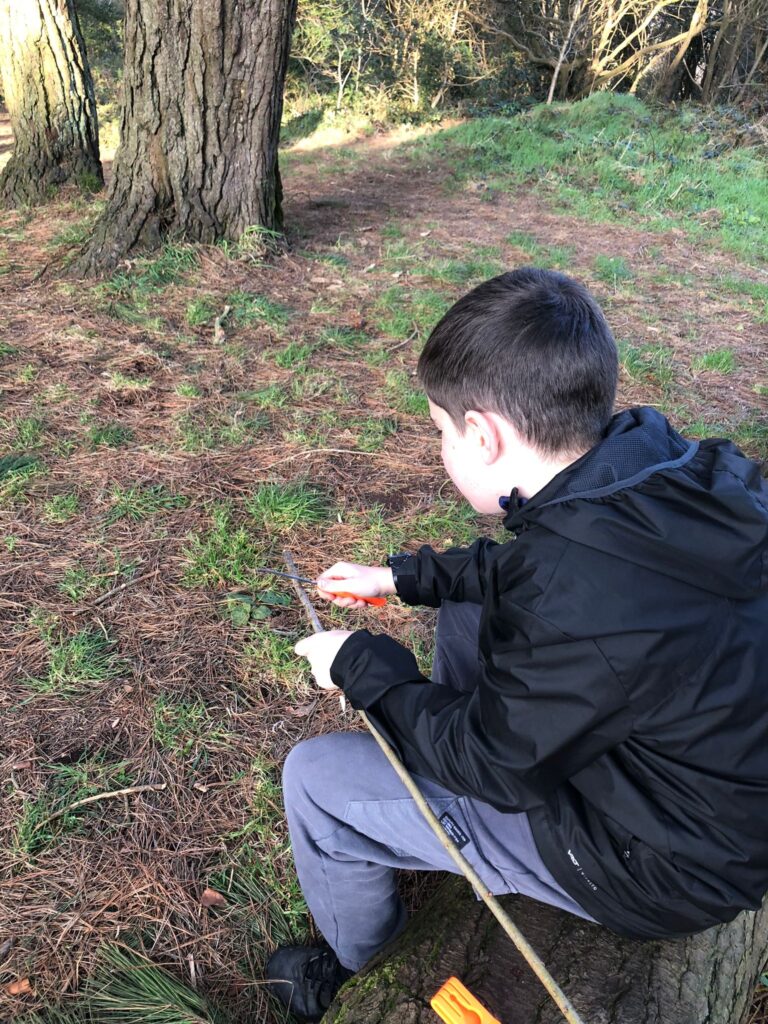
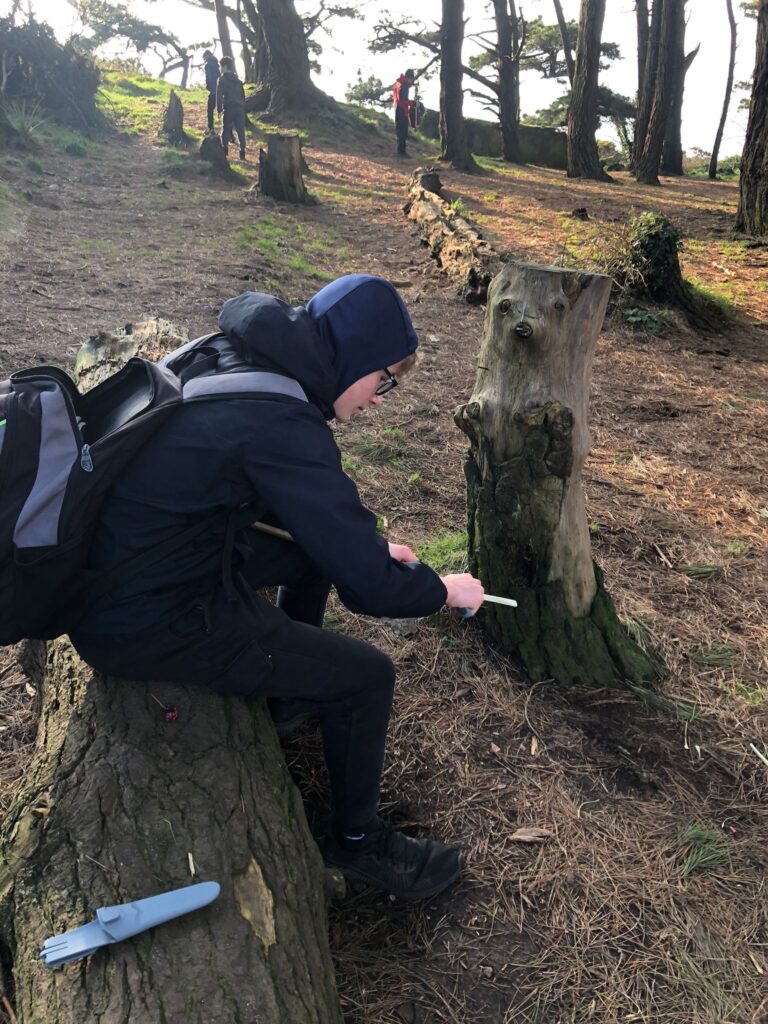
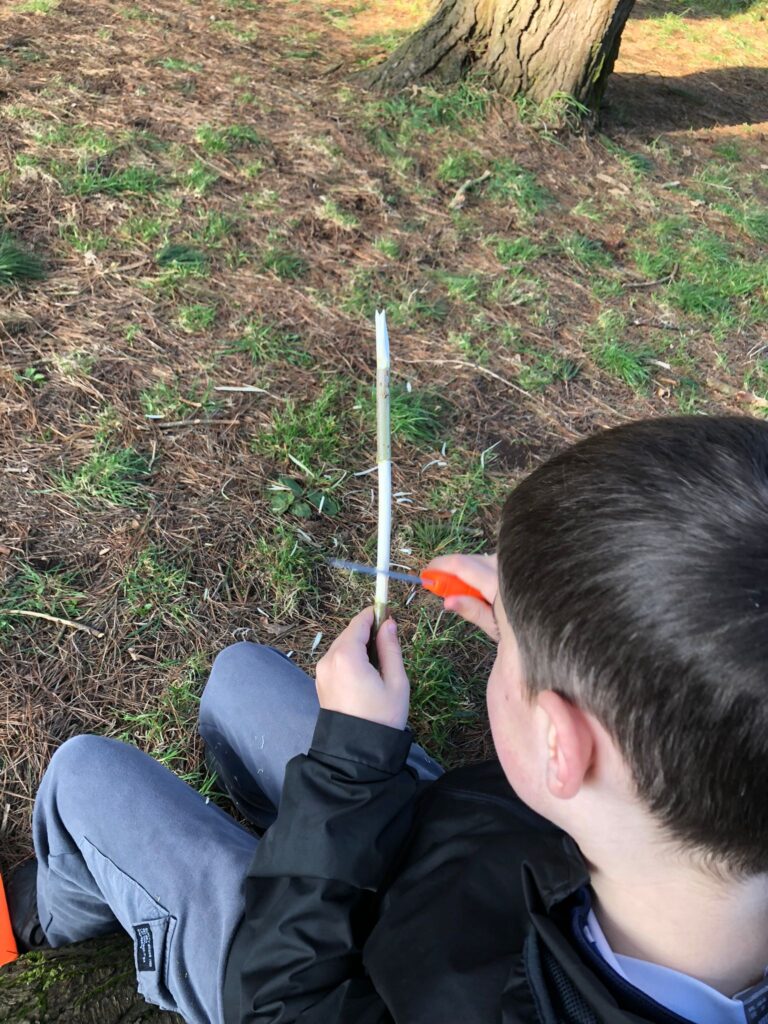
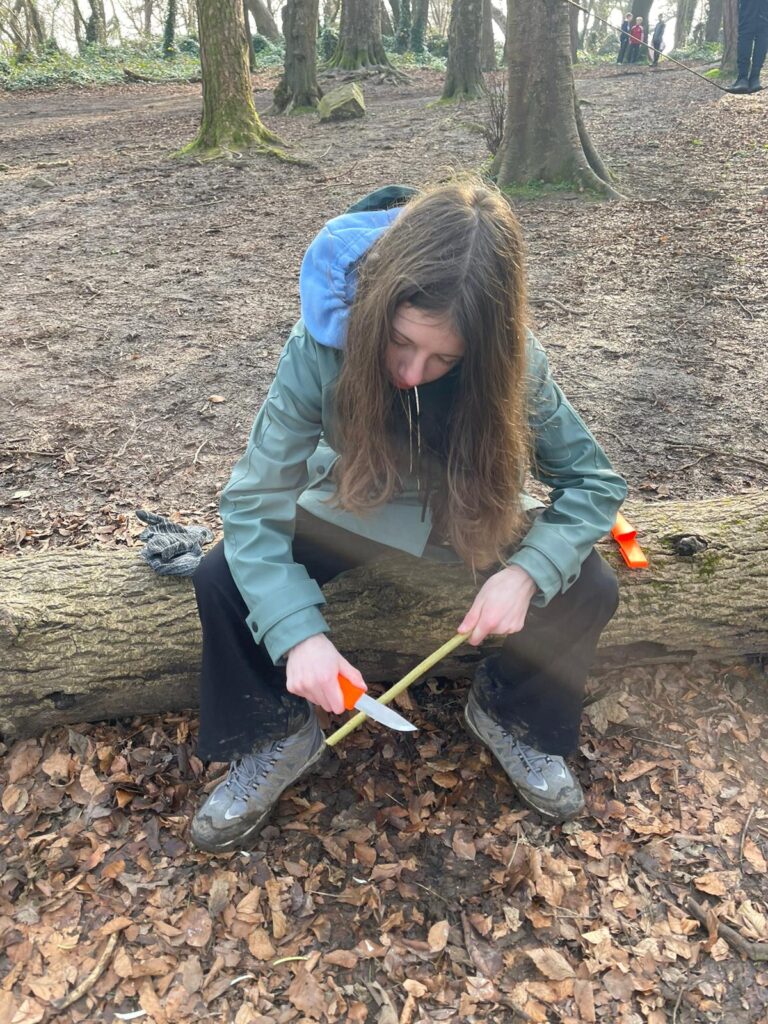
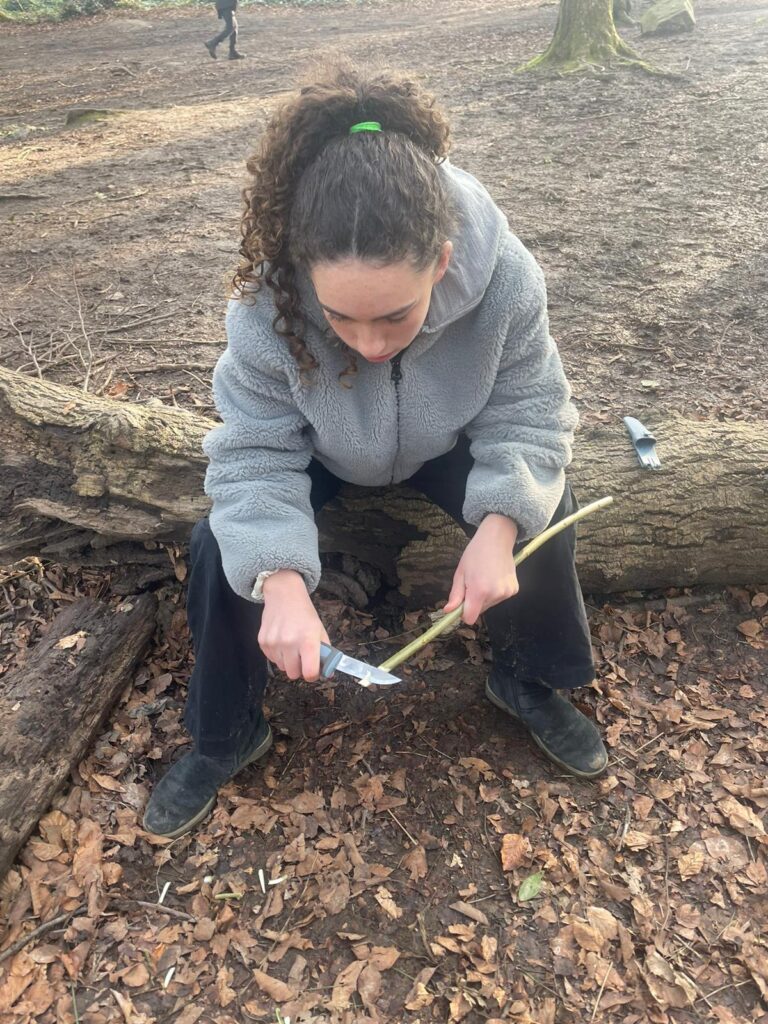
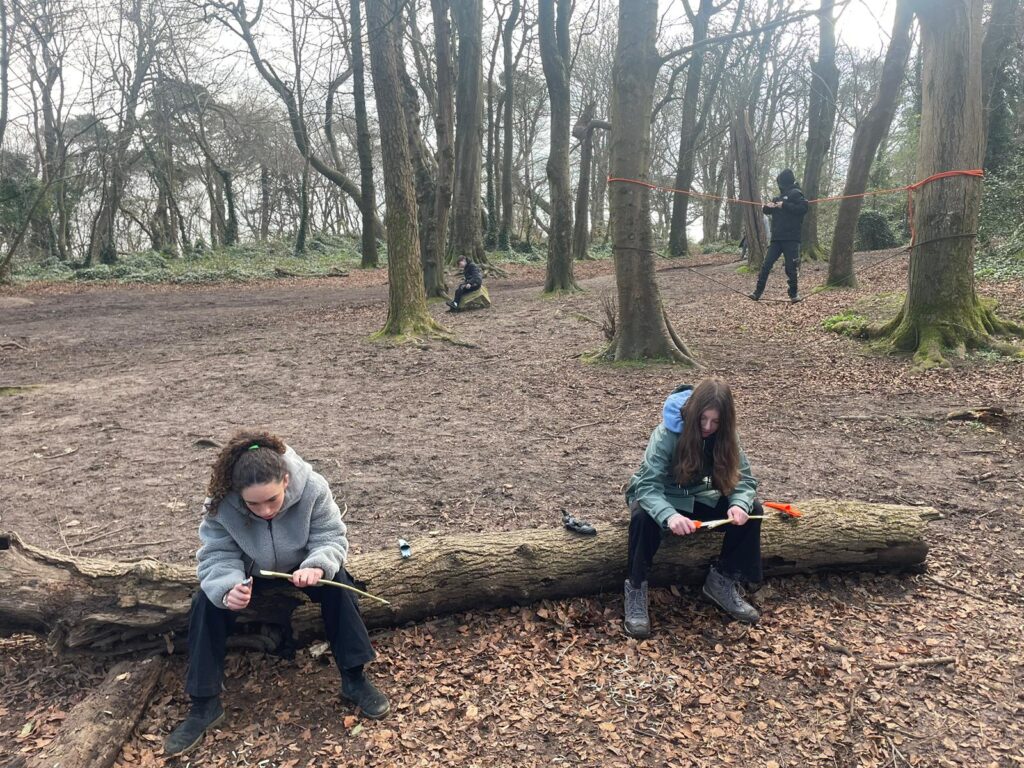
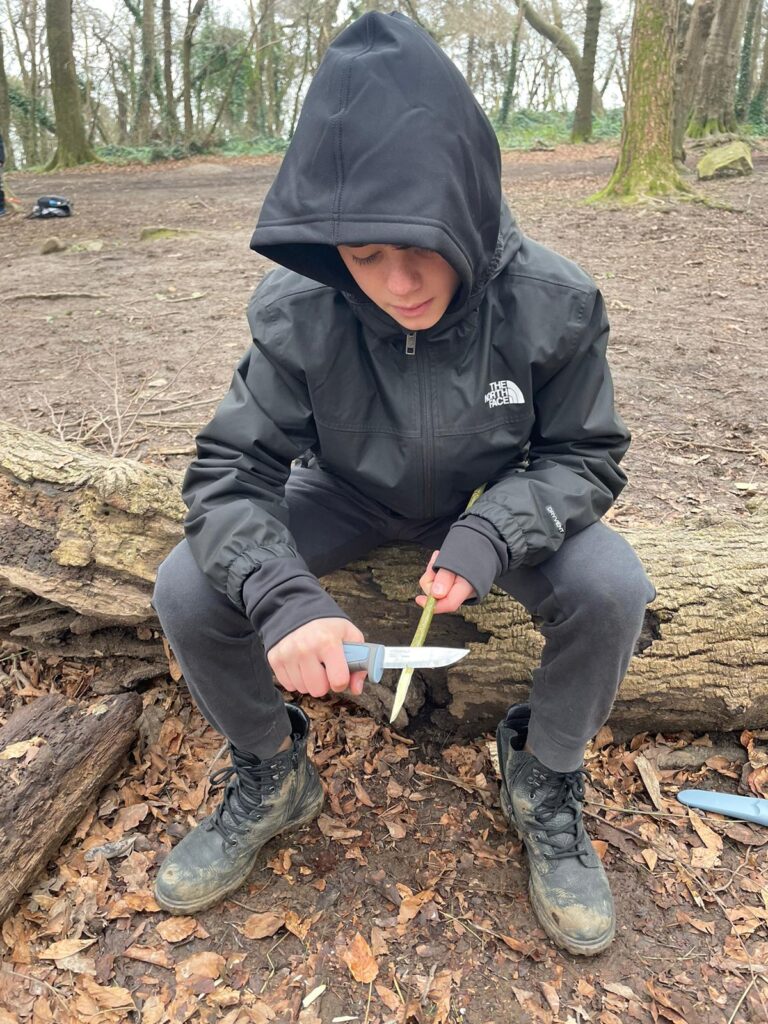
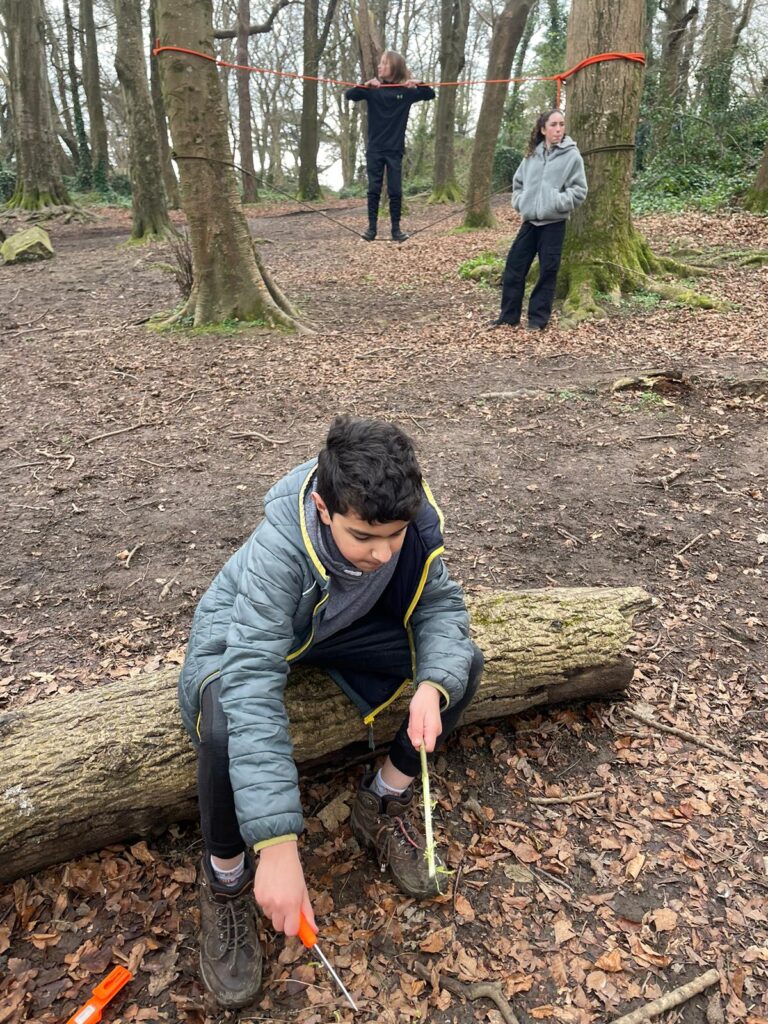
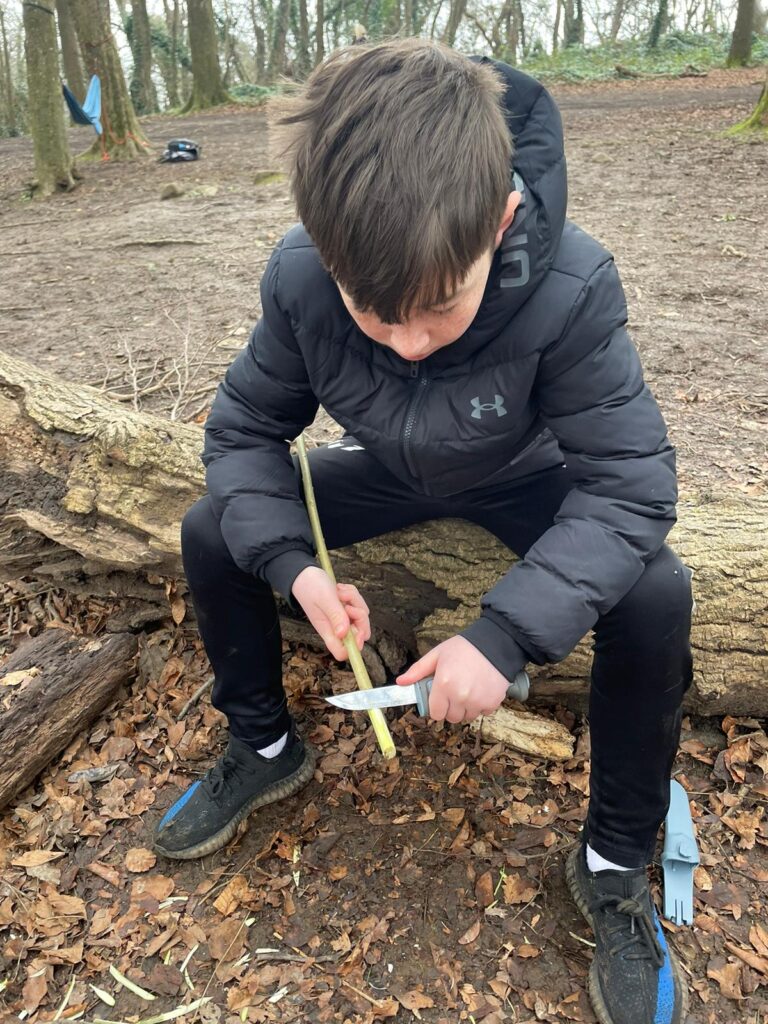
During the free play, while two of the children were using knives to make arrows, the others started to do other things such as climbing trees, putting up hammocks, putting up rope bridges and building dens.
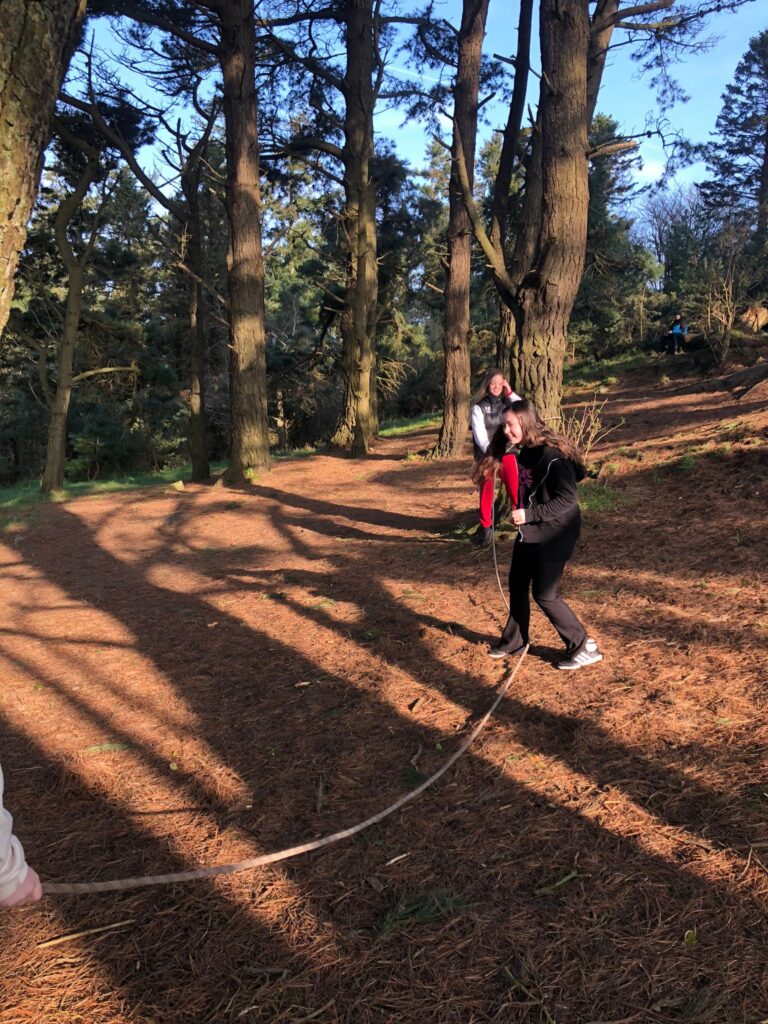
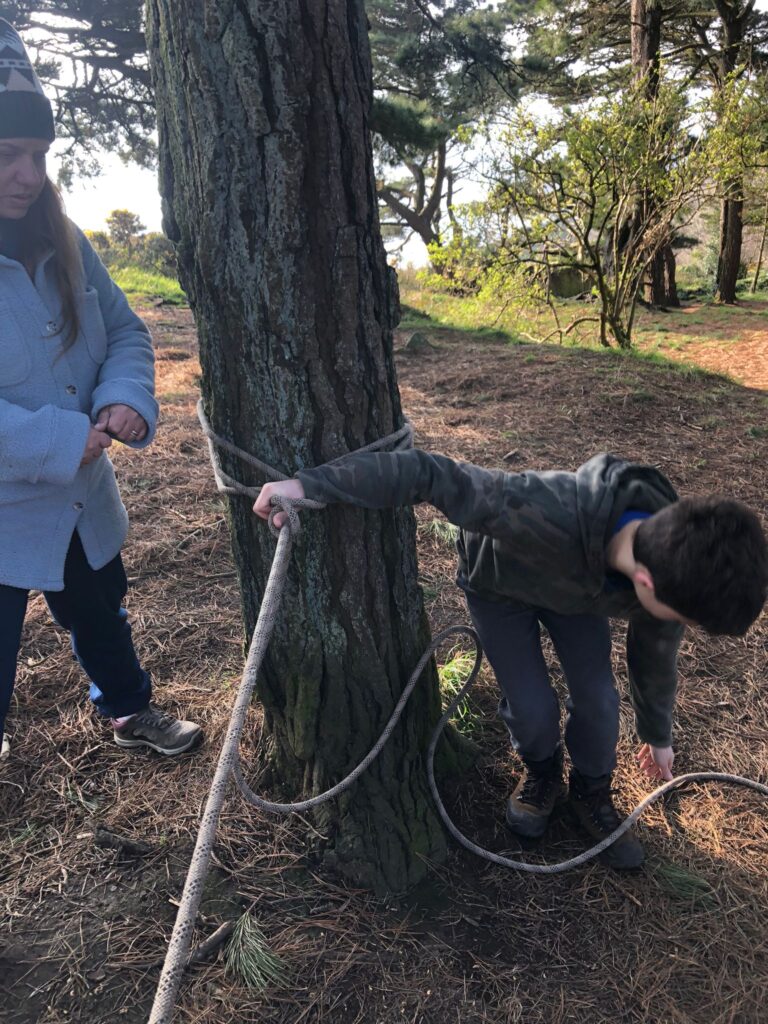
Forest School with the 6th class looked so different from those of younger classes. The element of imaginary play has almost gone, and their minds were more focused on practical tasks, helping adults or each other, following orders, and most importantly spending time with peers. Or for some children, having their own space.
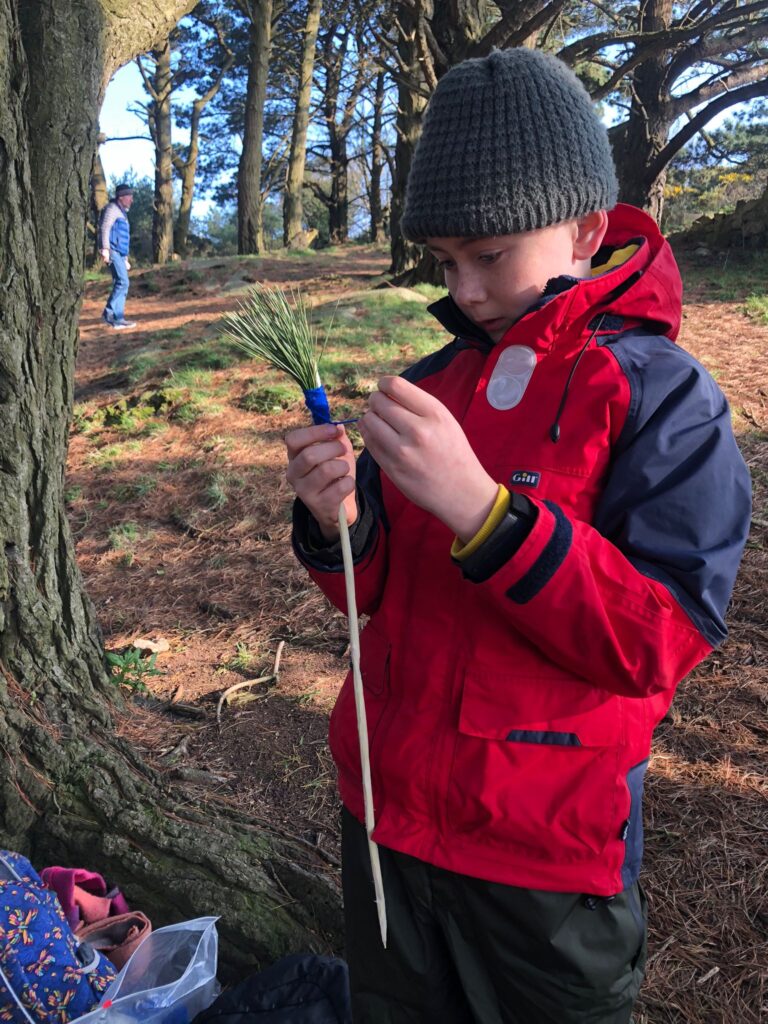
It seemed that the woodlands are no longer a magical place where fairies, monsters, and tribes lived. Nor the kitchens, cafes or hospitals they used to pretend there were. I remember some of the same children from even two years ago who used to enjoy being a tribe or being warriors, running around with sticks as
“weapons”, making a base and being guards etc. Sharing this imaginary play was their way of bonding, and their main conversations were who was what and how they would guard their base etc. These tribes seem to have disappeared.
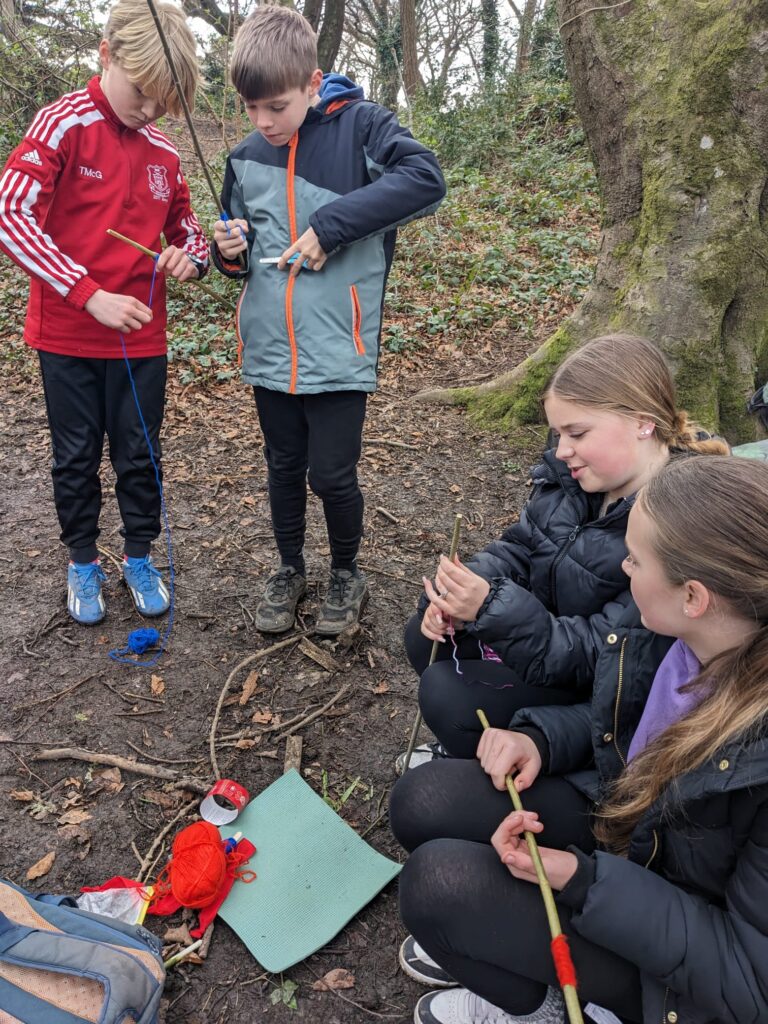
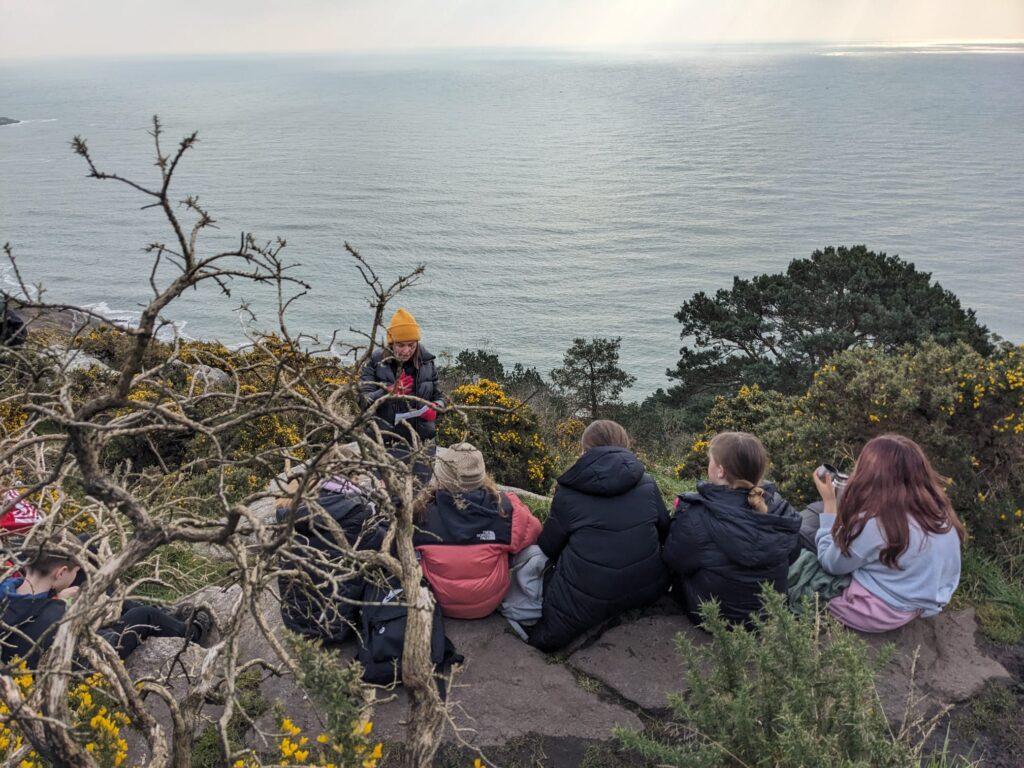
Instead, they seem to enjoy more structured games, or practical tasks. When they play nature games, they like having initiative and ownership, and they wanted to decide teams and rules themselves. More space to run around, and more thrilling activities were better. They were able to take a consensus when deciding the teams to make sure everyone felt that it was fair and happy, which involved negotiations and compromise. This process requires higher emotional intelligence and higher linguistic skills.
One of the children showed his skill at making knots for putting up hammocks and a rope bridge. He said that he knows lots of knots because of rock climbing. He showed different types of knots and explained them to the others. In Forest school, children get to be seen in different ways by their peers and children learn from each other as much as they do from the leader.
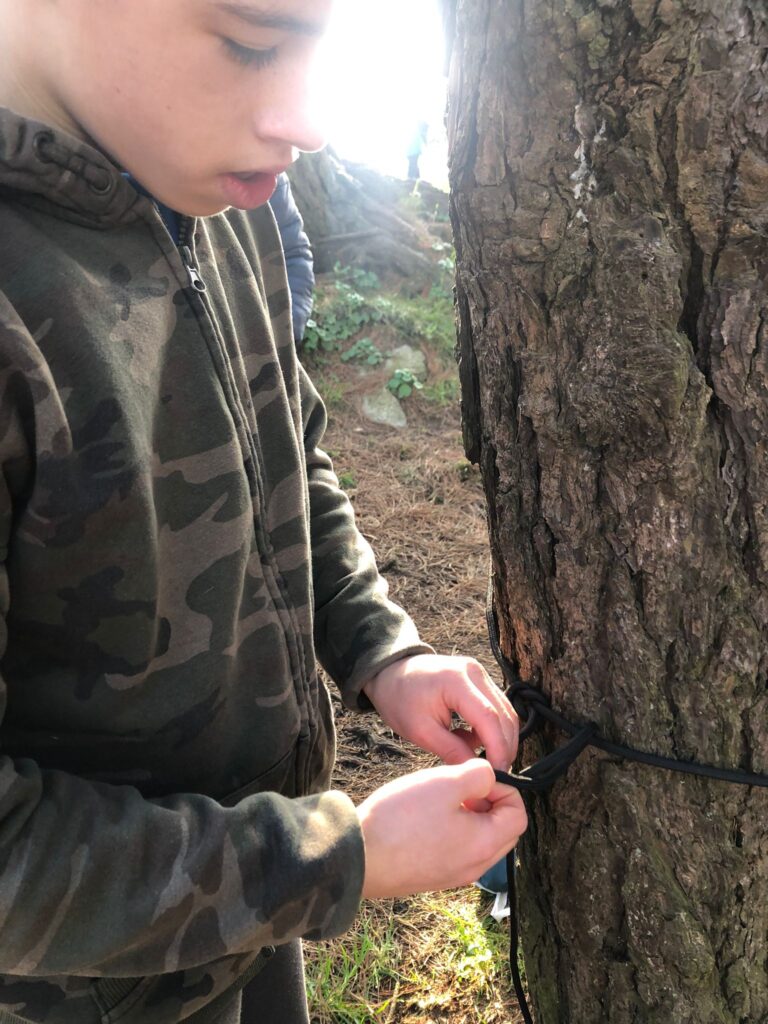
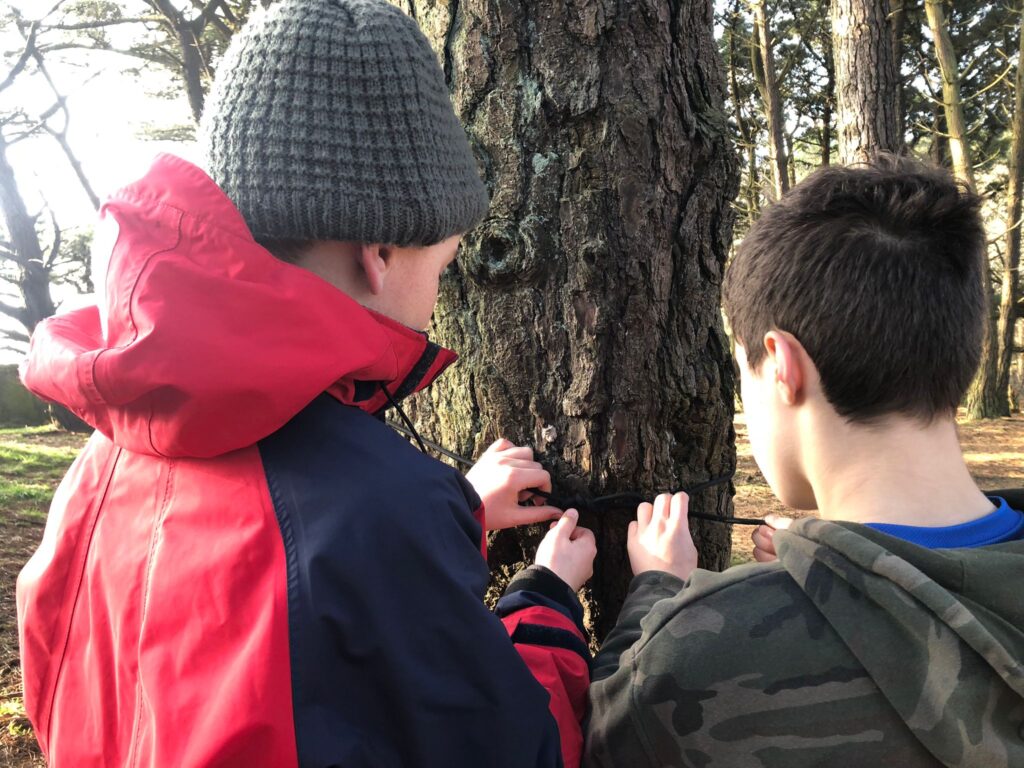
Another child found a fallen branch with big pine cones, and showed me that it was like axes. We looked up at the trees together to see which tree the branch fell off from, and talked about the risks of heavy pine branches after snow and high wind.
Some of the children helped making pine needle and gorse flower tea, and we shared the tea with everyone while we were sharing what we noticed and our gratitude after being on “sit spot”.
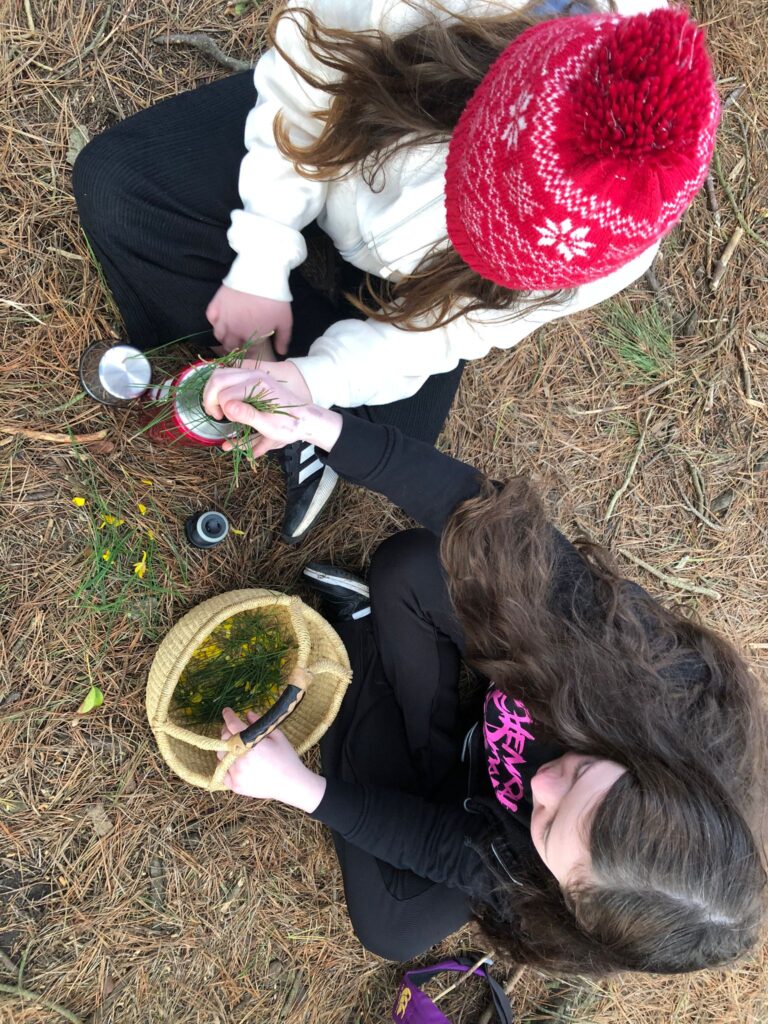
They are ready to be leaders for the younger classes, which may give them important learning at their developmental stage. With their peers, however, the benefits of Forest School seems to be more similar to these for adults spending time in nature. They can relax, learn practical skills, spend time with their friends and feel the pleasure of being away from their busy routine. As a forest school facilitator, I hope they still have eyes that see our debt to nature, that they notice things constantly changing, and have the empathy that will give them the sense of responsibility to act as leaders to create a future in which society is more in harmony with the natural world.


